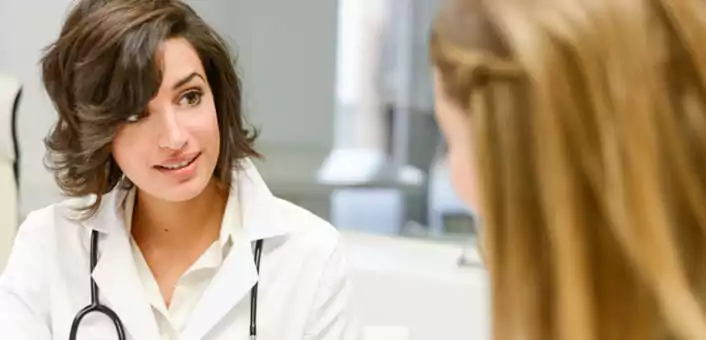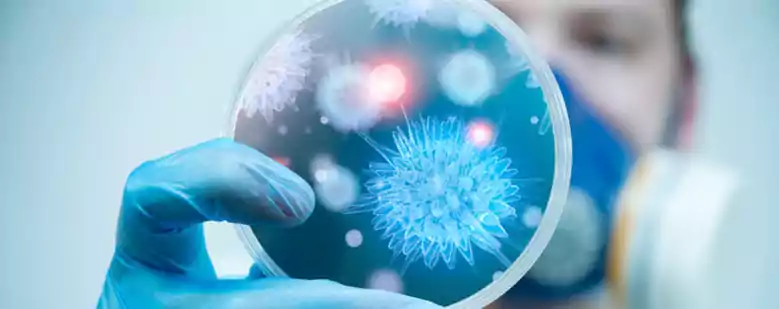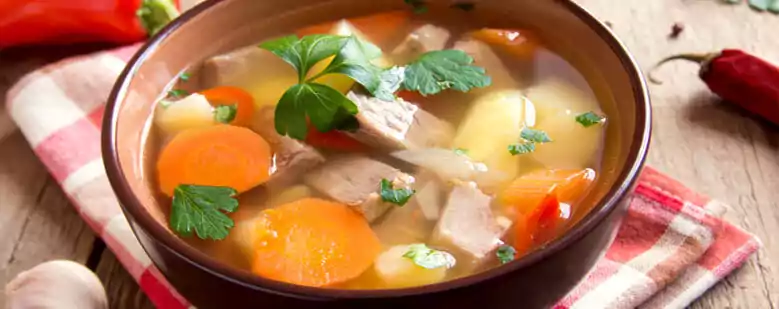
Living Well
Autoimmunity: A Functional Doctor Reveals The Key to Reversal
May 11, 2017When I was a medical student, like many others, I experienced something known as ’medical student syndrome’. Basically, for a short while, you think you have the disease you are studying about. Each of my classmates had their unique fears. For me, the chapters on autoimmunity were the nightmare; my body turning on itself, with no cure.
Autoimmune Disease: A Reversible Condition Sadly Considered Incurable
The textbook description of autoimmune disease is that it can target any organ or tissue in the body. These diseases are often genetic, far more common in females, and most importantly without any cure. Treatment was limited to pain killers and long term use of steroids or immunosuppressants. This was equally scary, because of the serious side effects involved.
With no preventive measures, as students we understood autoimmunity as something that struck people rather randomly and stayed with them forever.’ Fortunately, things have changed for good since my student days. A lot of research has gone into this often devastating condition, and we now know autoimmunity can be prevented and reversed.
When Protection Turns to Destruction
By design, our immune system plays the role of protecting us from harmful substances, such as bacteria, viruses, fungi, toxins, drugs, and foreign particles. There are a few players in this and I’m going to break down the process of autoimmunity into points for us to understand:
- Antibodies are little soldiers, which are either produced naturally or acquired by us overtime. The role of antibodies is to fight off harmful substances.
- Anitbodies do this by recognizing and responding to a protein on the surface of harmful cells called an antigen.
- Not all antigens are bad. Our body has naturally-occurring, non-harmful antigens as well. Antiboides are meant to recognize these, distinguish these from harmful antigens and leave them alone.
- Autoimmunity happens when antibodies are no longer able to distinguish between ‘self’ and ‘alien’ antigens. And they start to identify the body’s own cells as harmful, which eventually leads to a process of wrongful destruction.
What’s the Role of Inflammation in All This?
When the immune system is activated by a perceived threat, several chemicals are released. This process creates a state of inflammation, signaling the body to fight. This is a natural mechanism for protection, and normally such inflammation is short lived. The inflammatory state, in its attempt to save energy for the ongoing battle, makes us incapable of spending energy on anything else. This is why when we are ill, we are fatigued, often depressed, and somewhat dysfunctional. Toxins in the bloodstream also cause fever, muscle aches and joint pains. In autoimmune conditions, the inflammatory state becomes chronic, making life very difficult and in many cases utterly debilitating.
Some common autoimmune diseases include:
- Hashimoto’s Thyroiditis
- Diabetes Type I
- Rheumatoid Arthritis (RA)
- Pernicious Anemia
- Inflammatory Bowel Disease (IBD)
- Multiple Sclerosis (MS)
- Systemic Lupus Erythematosus (SLE)
- Scleroderma
- Myasthenia Gravis
- Vitiligo
Getting to the Bottom of Autoimmunity: Fixing the Gut
So where does it all begin? Immunity is regulated by a delicate balance of good and bad bacteria (microbiota), throughout the body. The mother ship of immunity lies in the gut. This is due to the sheer number of over 1000 bacterial species that inhabit it! Healthy microbiota is responsible for the correct digestion and absorption of nutrients. To prevent autoimmunity, they maintain the intestinal lining, which serves as a barrier, to prevent toxins and pathogens entering the body.
When there are more bad bacteria than good, it is called dysbiosis. Intestinal cells are meant to have ‘tight junctions’, allowing only very small and completely digested molecules to pass through. Dysbiosis results in both improper breaking down of foods and a widening of these junctions, causing what is known as a ‘leaky gut.’
When larger, undigested proteins pass through this intestinial barrier into the bloodstream, they end up in a variety of body tissues. Here, the immune system, unable to recognize them as being harmless, dutifully attacks them. As this war continues over time, the collateral damage spreads, with our antibodies tragically attacking and destroying the body’s own tissues.
Interestingly, we have bacteria all over the body, including the skin, mouth, sinuses, respiratory tract, and genitourinary tract. All of these areas also have mucosal linings. Poor bacterial balance and autoimmunity could attack any of these parts. This could well explain how autoimmunity could cause so many diseases in different parts of the body. Dr. Alex Vasquez (D.C., N.D., D.O., F.A.C.N.) from the International College of Human Nutrition and Functional Medicine points out the need for addressing the microbiota of the body in its entirety, because each patient has different areas of imbalance and different symptoms.
The Havoc Caused by our Zeal to Kill Bugs
We spray our fruits and vegetables with pesticides, pump our livestock with antibioitcs, pop prescription antibiotics at the drop of a hat, and live on processed junk food. The result? We make it very difficult for the good bugs to thrive and keep us safe. Autoimmunity is one of the more severe effects of all this.
With more and more people being diagnosed with autoimmune diseases, it should be clear that what we’ve done with our environment and foods has a far greater role in causing autoimmune diseases than genetics and gender.
Reversing Autoimmunity: A Healthy Diet Leads the Way
There are several diets that have been shown to help reverse autoimmunity. Examples include the Specific Carbohydrate Diet (SCD), the Gut and Psychology/Physiology (GAPS) Diet, the Lectin Avoidance Diet (LAD), and the Autoimmune Protocol (AIP) Diet. All of them are based on the idea of starving out the bad bacteria, re-establishing healthy bacterial balance, healing and sealing mucosal linings, and providing sufficient nutrition.
Harmful bacteria require sugars to survive, and so, most of these diets restrict carbohydrates. However, there are significant differences between each of these diets. It is therefore crucial to consult with a physician who employs nutritional healing, for a step-by-step guide on choosing a diet that suits you best. Given that there is some trial and error involved in this process, it is important to keep a close watch on your symptoms to determine what works best for you.
I am most inclined to follow and recommend Dr. Natascha Campbell-Mcbride’s GAPS diet, which has been derived from Dr. Sydney V. Haas’s SCD, along with incorporating restrictions from Dr. Steven Gundry’s LAD. It’s kind of the best of all worlds.
Dr. Campbell-Mcbride has improved on the restrictions of the SCD and introduced more nutrient-dense foods. Her phenomenal work has healed not only autoimmunity but also other severe conditions such as autism and psychiatric illnesses.
One caveat while adopting the GAPS diet: In my clinical practice, I ask patients to also avoid soluble fiber rich fruits and vegetables, nightshades, legumes, A1 dairy products, and nuts (unless ground finely).
Until your gut is fully healed, eat only foods that are extremely easy to digest and absorb. This ensures there there are no large food particles that can slip into the blood stream undigested, while the body gets all the nutrition it needs.
My simple rule of thumb in choosing a diet: If the food is easy on your teeth, it’s easy on your gut! Listed below are some of the things I recommend to include in your diet for reversing autoimmune diseases:
- 3 cups of homemade bone broth
- Homemade, fermented foods, like kimchi, sauerkraut, pickled vegetables, etc.
- Probiotics of the right strains and Colony Forming Units (CFU)
- Vitamin A and D, magnesium, zinc, and selenium supplementation
- Antibacterial herbs and spices, such as peppermint & oregano (oils preferably), St. John’s Wort, clove, cinnamon
- Ginger, curcumin, and milk thistle for enhancing the functioning of liver
In addition to strictly following the suggested dietary protocol, I also recommend breathing exercises and yoga. I do not recommend any other form of exercise since vigorous movement can enhance inflammation. And finally, just like with any other chronic disease, you need a strong emotional support system to help reverse autoimmune diseases.
Final Thoughts
For patients of autoimmune diseases, it can be a long, frustrating path to achieve freedom from autoimmunity. But what’s important is that there is a way out. You don’t have to be ill forever and rely on prescription drugs to reduce symptoms temporarily. Now that you have the right knowledge, take action, be diligent, work with a qualified practitioner and enjoy a fully functional life!
References:
Smith, D.A., Germolec, D.R. 1000. Introduction to Immunology and Autoimmunity. Environmental Health Perspectives. 107(5): 661-665
Atimal, H., Shoenfeld, Y. 2004. Autoimmunity and Autoimmune diseases such as systemic lupus erythematosus. Systemic Lupus Erythematosus. Page 3-27
Oppenheim, J.J., Rosenstreich, D.L., Potter, M. 1981. Cellular Functions in Immunity and Inflammation. Immunity and Inflammation. Page 13-14
https://www.ncbi.nlm.nih.gov/pmc/articles/PMC2783422/
https://www.ncbi.nlm.nih.gov/pubmed/28260787
http://www.nature.com/nri/journal/v17/n4/full/nri.2017.7.html
http://pubs.sciepub.com/ijcd/3/4/8/
http://www.medicalnewstoday.com/articles/246960.php
Vasquez A. Integrative Rheumatology, 2006
Vasquez A. Chiropractic and Naturopathic Medicine for the Promotion of Wellness and Alleviation of Pain and Inflammation
Ramakrishnan T, Stokes P. Beneficial effects of fasting and low carbohydrate diet in D-lactic acidosis associated with short-bowel syndrome. JPEN J Parenter Enteral Nutr. 1985 May-Jun;9(3):361-3.
Force M, Sparks WS, Ronzio RA. Inhibition of enteric parasites by emulsified oil of oregano in vivo. Phytother Res. 2000 May;14(3):213-4
Schempp CM, Pelz K, Wittmer A, Schopf E, Simon JC. Antibacterial activity of hyperforin from St John’s wort, against
multiresistant Staphylococcus aureus and gram-positive bacteria. Lancet. 1999 Jun 19;353(9170):2129
Seaman DR. The diet-induced proinflammatory state: a cause of chronic pain and other degenerative diseases? J Manipulative Physiol Ther. 2002 Mar-Apr;25(3):168-79
Yamahara J, Miki K, Chisaka T, Sawada T, Fujimura H, Tomimatsu T, Nakano K, Nohara T. Cholagogic effect of ginger and its active constituents. J Ethnopharmacol. 1985;13(2):217-25.
Rasyid A, Lelo A. The effect of curcumin and placebo on human gall-bladder function: an ultrasound study. Aliment Pharmacol Ther. 1999 Feb;13(2):245-9
Campbell-McBride, N. Gut and psychology syndrome (GAP syndrome or GAPS) [online]. Journal of the Australasian College of Nutritional and Environmental Medicine, Vol. 24, No. 2, 2005 Aug: 14-5
http://parkcountychiropractic.com/wp-content/uploads/2012/09/Gut-and-Psychology.pdf
http://citeseerx.ist.psu.edu/viewdoc/download?doi=10.1.1.566.6725&rep=rep1&type=pdf






